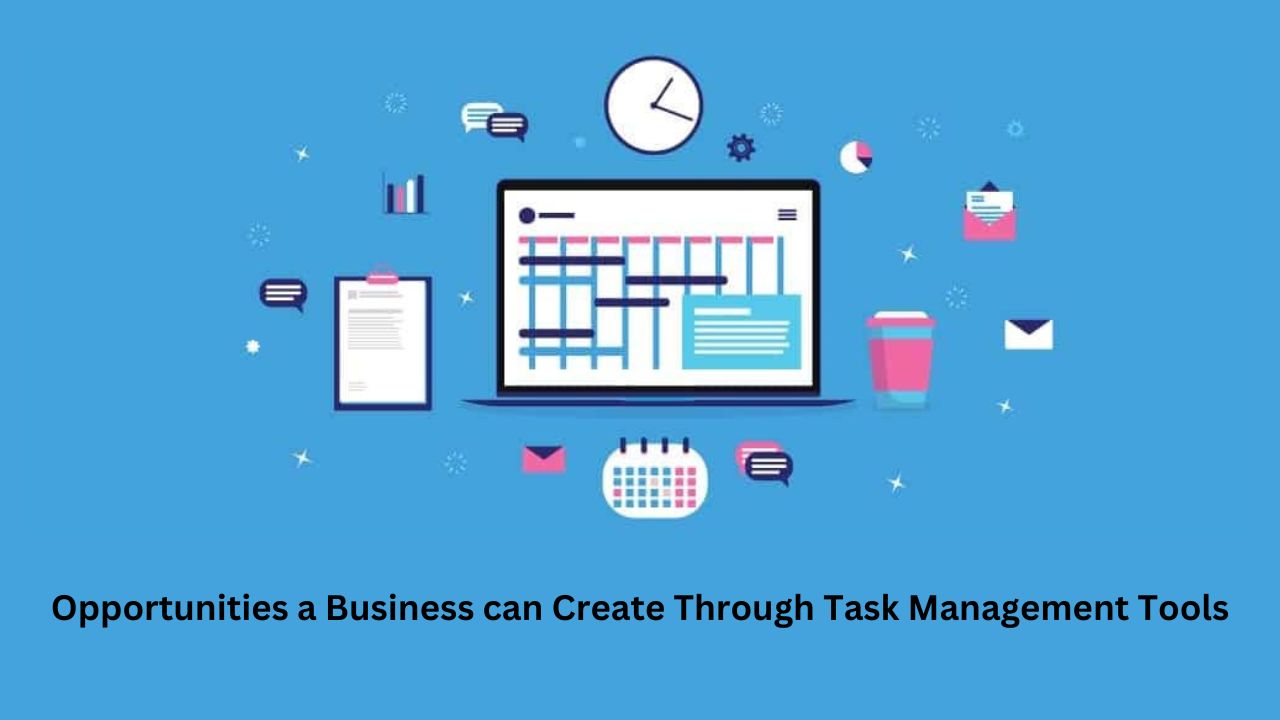by Soumyajit Admin
Share

In today’s fiercely competitive business landscape, maximizing employee productivity has become a top priority for business owners. A highly productive workforce can make all the difference in achieving business goals and maintaining a competitive edge. When employees are engaged, motivated, and working efficiently, it not only leads to increased profits but also fosters a positive work culture. In this blog, we will explore actionable tips and strategies for business owners to boost employee productivity, ultimately driving success and growth.
Top 10 Tips to Improve Employee Productivity For Business Owners
-
Create a Positive Work Environment:
Employee productivity is intricately linked to the quality of the work environment. A positive workplace fosters an atmosphere of trust, respect, and open communication, which can profoundly influence employee morale and motivation. When employees feel genuinely valued and appreciated, they are more inclined to invest their utmost effort into their tasks. Such an environment not only boosts productivity but also nurtures a sense of belonging and commitment among the workforce. Consequently, organizations that prioritize creating a positive work culture tend to experience higher levels of employee engagement, greater innovation, and ultimately, improved overall performance, ultimately creating a win-win situation for both employees and the company.
-
Set Clear Expectations:
Establishing clarity in expectations is fundamental for employees to comprehend their roles and responsibilities within an organization. Business owners and managers play a pivotal role in this process by furnishing explicit job descriptions, performance objectives, and key performance indicators (KPIs). When employees are armed with this information, they gain a clear sense of direction and purpose in their work. This clarity not only minimizes confusion but also empowers individuals to channel their energies and talents toward accomplishing set objectives. Moreover, it enhances accountability and allows for more effective performance evaluations. Ultimately, the synergy between clear expectations and employee efforts results in improved productivity and contributes to the overall success of the organization.
Also, read our article on Financial Management Tips For Small Businesses
-
Provide Ongoing Training and Development:
Prioritizing employee development represents a twofold benefit for organizations.
Firstly, it signifies a genuine commitment to fostering individual growth and skill enhancement, reinforcing the message that employees are highly valued assets.
Secondly, by offering consistent training and development opportunities, employers can elevate job satisfaction and overall productivity.
When employees perceive a supportive environment for learning and advancement, their motivation and engagement soar. This, in turn, cultivates a workforce that is not only highly skilled but also deeply committed to their roles. Consequently, investing in employee development becomes a strategic move, fostering a culture of continuous improvement, and ultimately propelling the organization towards greater success.
-
Encourage Work-Life Balance:
Burnout exacts a heavy toll on productivity and well-being. To mitigate its impact, business owners should actively champion work-life balance through various means. Offering flexible work schedules, paid time off, and remote work options when feasible not only acknowledges the diverse needs of the workforce but also promotes a healthier equilibrium between professional and personal life. When employees have the opportunity to recharge and manage their commitments outside of work, they are better equipped to bring their A-game to the job. Consequently, productivity flourishes, and motivation remains high, resulting in a win-win situation where employees thrive, and businesses reap the benefits of a more engaged and efficient workforce.
Check out our article on The Importance of Market Research in Business Success
-
Leverage Technology:
Embracing technology and cutting-edge tools is paramount for businesses aiming to stay competitive and boost productivity. Strategic investments in software and automation systems can effectively eliminate the drudgery of repetitive tasks, enabling employees to redirect their energies toward more creative and value-added endeavors.
Furthermore, these tools facilitate progress tracking and seamless communication, fostering collaboration and efficiency across teams. In the rapidly evolving tech landscape, staying updated with the latest trends is not just advisable but imperative. It ensures that businesses remain agile, adaptable, and well-positioned to leverage emerging technologies, ultimately enhancing their competitive edge and sustaining long-term growth in an ever-changing market.
Read our article on The Benefits Of Strategic Planning For Your Business
-
Recognize and Reward Achievements:
Acknowledging and rewarding employee achievements, even the smallest ones, can have a profound impact on morale and motivation within a workplace. Implementing incentives such as bonuses, promotions, or accolades like “Employee of the Month” creates a culture of recognition and inspires employees to consistently excel in their roles.
When individuals see their efforts acknowledged and rewarded, it not only boosts their self-esteem but also reinforces their commitment to delivering their best. Feeling valued and appreciated fosters a sense of belonging and dedication to the organization’s goals.
As a result, recognizing and rewarding employee contributions becomes a potent strategy for nurturing a motivated, engaged, and high-performing workforce.
-
Effective Communication:
Effective communication serves as the bedrock of a thriving workplace. Business owners must prioritize maintaining transparent channels of communication, actively inviting employees to express their ideas, concerns, and feedback. Regular team meetings, one-on-one discussions, and feedback sessions create an environment of trust and collaboration. Encouraging employees to voice their thoughts not only empowers them but also cultivates a sense of ownership in the company’s direction. Moreover, it allows for the timely resolution of issues and the implementation of innovative solutions. In essence, a culture of open communication not only enhances workplace productivity but also contributes to a harmonious and engaged workforce, fueling the organization’s success.
-
Foster a Culture of Collaboration:
Fostering collaboration among team members is a catalyst for innovation and heightened employee productivity. Encouraging employees to collaborate on projects, exchange knowledge, and provide mutual support creates an environment where fresh ideas can flourish. This culture of collaboration not only enhances problem-solving but also promotes a sense of belonging and camaraderie among colleagues.
This, in turn, fuels motivation and productivity as individuals feel part of a cohesive unit working towards shared goals. When teamwork and collective effort become the norm, the organization benefits from a synergy of talents and perspectives, resulting in innovative solutions and a workforce that is not only engaged but also highly effective in delivering results.
-
Embrace Flexibility:
In the contemporary workforce, flexibility is highly prized. Granting employees the autonomy to customize their work environment to align with their unique requirements can yield profound benefits, including increased job satisfaction and productivity. Whether it entails flexible work hours, the opportunity for remote work, or the provision of alternative workspaces, offering flexibility not only meets the diverse preferences of today’s workforce but also serves as a powerful magnet for attracting and retaining top talent. It demonstrates an employer’s commitment to work-life balance and recognizes that individuals can thrive when given the freedom to adapt their work arrangements to their needs, ultimately fostering a more content and motivated workforce.
-
Monitor and Evaluate Performance:
Consistent performance evaluations and feedback sessions are indispensable tools for nurturing employee productivity and enhance growth. Business owners should not only offer constructive feedback but also establish performance improvement plans when required. These evaluations allow for the measurement of employee progress and the identification of areas for development. Moreover, they provide an opportunity to engage in meaningful dialogue and offer ongoing support to help individuals stay on track and achieve their objectives. By fostering this continuous feedback loop, employers empower their workforce to evolve, develop new skills, and consistently contribute at their best, ultimately driving both individual and organizational success.
Note:
Are you facing challenges in your business that seem insurmountable? Do you aspire to achieve remarkable growth and success, but find yourself at a crossroads? It’s time to partner with a professional business consultant who can provide you with expert guidance and tailored solutions to navigate the complexities of today’s competitive market. Our team of seasoned consultants brings a wealth of experience and a proven track record of helping businesses of all sizes overcome obstacles, drive innovation, and maximize profitability. Don’t let obstacles hold you back any longer—take the first step towards a brighter, more prosperous future by enlisting the expertise of our business consultants. Success is within reach, and we’re here to guide you every step of the way.
Concluding Notes
In the quest to improve employee productivity, business owners must recognize that it is not a one-size-fits-all endeavour. Each organization is unique, and the strategies employed should align with the company’s culture and goals.
By creating a positive work environment, setting clear expectations, offering ongoing development opportunities, and fostering a culture of collaboration and communication, business owners can set their teams up for success.
Remember, the road to improved employee productivity is an ongoing journey. It requires dedication, adaptability, and a commitment to creating an environment where employees can thrive. When employees feel valued, supported, and engaged, they are more likely to invest their energy and talents in driving the success of the business.
So, whether you are a seasoned business owner or just starting out, implementing these tips can lead to a more productive and prosperous future for your organization. Start today, and watch your employees and business flourish.
STAY IN THE LOOP
Subscribe to our free newsletter.
Why Does Every Industry Need a Task Management Tool? Are you finding it increasingly difficult to manage projects, keep up with deadlines, and ensure that your team is always on the same page? In the fast-paced modern workplace, where multitasking is more the norm than the exception, task management tools have emerged as the linchpin […]
Are you looking to enhance your business’s efficiency and productivity without breaking the bank? In the dynamic world of business, staying organized and on top of tasks is not just an option—it is a necessity. Task management tools have emerged as a game-changer for businesses of all sizes, offering the power to streamline operations, improve […]
In today’s fast-paced, dynamic business environment, the success of any organization hinges on the performance of its teams. High-performing teams are not just a product of chance; they are meticulously crafted through effective leadership and strategic talent management. Today, here, in this blog post, we delve into the intricacies of developing high-performing teams, exploring the […]
In the realm of teamwork, effective communication acts as the glue that holds everything together. Whether you are collaborating on a project, managing a team, or striving for a common goal, clear and open communication is paramount to success. However, despite its significance, communication gaps often plague teams, leading to misunderstandings, delays, and frustration. Here, […]




